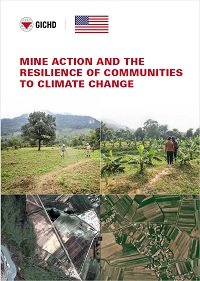Climate resilience – the ability or capacities of populations to cope with and respond to climate change-related hazards – has gained increased attention in recent years, including in the mine action sector. Why? 60 per cent of the 20 countries most vulnerable to climate change are contaminated by explosive ordnance. Climate change-related events such as heatwaves, heavy precipitation, droughts and tropical cyclones drive human displacements, have a negative effect on human health and contribute to the increase of hunger and poor nutrition in areas where vulnerable populations already struggle to grow or find sufficient food. Due to their relative levels of vulnerability, communities affected by the presence of explosive ordnance are not exempt from the effects of climate change.
This study examines the links between mine action and climate resilience, more specifically by finding ways to integrate climate resilience considerations within mine action policies, strategies, standards and planning processes. As part of this study, the GICHD collected evidence from eight mine action programmes, visited 20 communities and met 110 people, to get a better understanding of the connection between mine action and climate resilience and the important role that the sector plays in facilitating greater climate resilience at the community level.
Categories: Mine Action, Quality Management in Mine Action Programmes, Environment, Sustainable Development Goals (SDGs), Priority Setting

